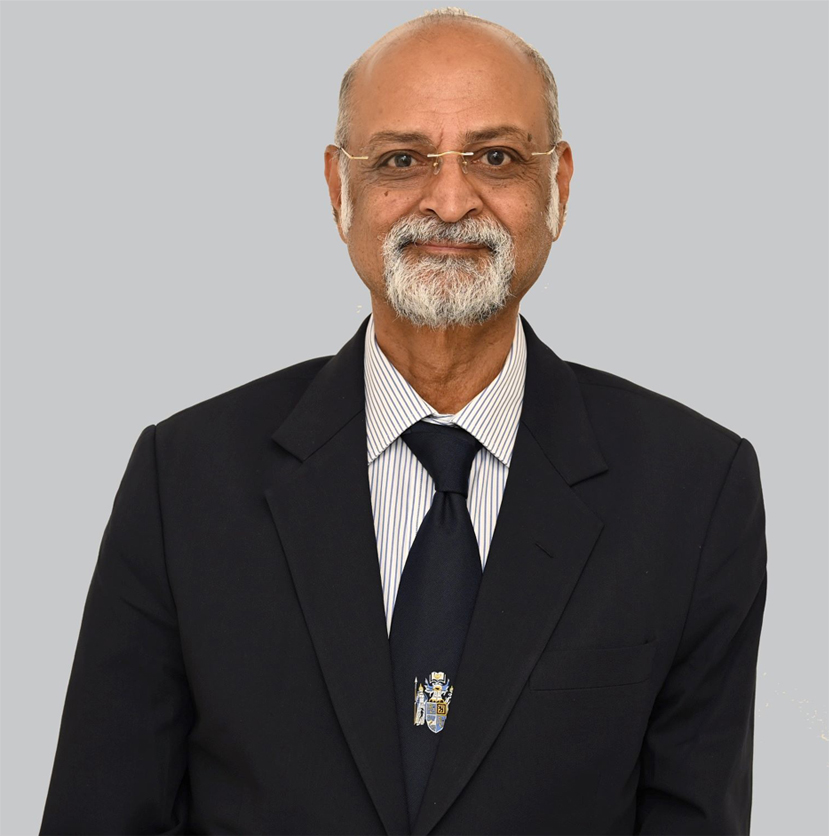CORONAVIRUS: MISSION- Save Your Heart
Since its recognition in December 2019, Covid-19 has rapidly spread globally causing a pandemic. Pre-existing comorbidities such as obesity, hypertension, diabetes, and cardiovascular disease are associated with a greater severity and higher fatality rate of

Since its recognition in December 2019, Covid-19 has rapidly spread globally causing a pandemic. Pre-existing comorbidities such as obesity, hypertension, diabetes, and cardiovascular disease are associated with a greater severity and higher fatality rate of covid-19. Furthermore, COVID-19 contributes to cardiovascular complications, including acute myocardial injury as a result of acute coronary syndrome, myocarditis, stress-cardiomyopathy, arrhythmias, cardiogenic shock, and cardiac arrest. Considerations are necessary in supportive treatment with anticoagulation, the continued use of renin-angiotensin-aldosterone system inhibitors, arrhythmia monitoring, immunosuppression or modulation, mechanical circulatory support and even lung transplant.
Since patients with Covid-19 with cardiovascular comorbidities have higher mortality, and the severity of COVID-19 disease correlates with cardiovascular manifestations, it is important to understand the interaction of COVID-19 and cardiovascular disease (CVD). The higher mortality in patients with cardiovascular comorbidities may be directly attributable to underlying CVD or merely coincident with CVD. CVD may also be a marker of accelerated ageing, immune system dysregulation, or other mechanisms that affect COVID-19 prognosis.
Pathophysiology of cardiac injury
SARS-CoV-2 is an enveloped, positive-sense single-stranded RNA virus. SARS-CoV-2 and other similar coronaviruses use the ACE 2 (ACE2) protein for ligand binding before entering the cell via receptor-mediated endocytosis. More than 7.5% of myocardial cells have positive ACE2 expression, based on single-cell RNA sequencing, which could mediate SARS-CoV-2 entry into cardiomyocytes and cause direct cardiotoxicity.
SARS-CoV-2 viral particles have been identified by RT-PCR in cardiac tissue in some cases, supporting that direct cardiotoxicity may occur. Virally driven hyperinflammation with cytokine release may lead to vascular inflammation, plaque instability, myocardial inflammation, a hypercoagulable state, and direct myocardial suppression.
Cardiovascular manifestations
The clinical cardiovascular manifestations of COVID-19 include elevation of cardiac biomarkers (ischaemic or non-ischaemic aetiology), cardiac arrhythmias, arterial and venous thromboembolism (VTE), and cardiogenic shock and arrest. Myocardial injury is common among patients with COVID-19 infection and correlates with disease severity. Although somewhat variable, studies on patients with COVID-19 have generally defined myocardial injury as the elevation of high-sensitivity cardiac troponin (hs-cTn) above the 99th percentile of its upper limit of normal or evidence of new electrocardiographic or echocardiographic abnormalities. Increased levels of hs-cTn correlate with disease severity and mortality rate in COVID-19, even after controlling for other comorbidities.
It is a challenging task to differentiate potential aetiologies of cardiac injury: acute coronary syndrome (ACS) due to plaque rupture or thrombosis (type I myocardial infarction (MI)) or supply-demand mismatch (type II MI), myocardial injury due to DIC, and non-ischaemic injury (myocarditis, stress-induced cardiomyopathy, or cytokine release syndrome).
Severe viral infections can cause a systemic inflammatory response syndrome, thus increased risk of plaque rupture and thrombus formation, resulting in either an ST-elevation MI or non-ST-elevation MI.
Severe respiratory viral infections can also lead to decreased oxygen delivery to the myocardium via hypoxaemia and vasoconstriction, as well as the haemodynamic effects of sepsis with increased myocardial oxygen demand. This supply and demand mismatch may lead to sustained myocardial ischaemia in patients with underlying coronary artery disease. However, a rise and/or fall of hs-cTn is not sufficient to secure the diagnosis of acute MI as seen in MI with non-obstructive coronaries, even in the absence of COVID-19. Therefore, the diagnosis of acute MI should also be based on clinical judgement, symptom/signs, ECG changes, and imaging studies.
Myocardial injury with DIC, as regards a life-threatening condition present in 71.4% (15/21) of non-survivors with COVID-19 and 0.6% (1/162) of survivors. A marker of severe sepsis, DIC further perpetuates multiorgan damage through thrombosis, reduced perfusion, and bleeding, DIC has been implicated in the thrombosis of coronary arteries (epicardial vessels and microvasculature), focal necrosis of the myocardium, and severe cardiac dysfunction.
Similarly, Non-ischaemic myocardial injury, Myocarditis and stress-induced.
cardiomyopathy from SARS-CoV-2 infection may also be mediated by non-ischaemic mechanisms, such as acute and fulminant myocarditis and stress-induced cardiomyopathy. Reports of various presentations of non-ischaemic myocardial injury in COVID-19.
Bradykinin storm and cytokine release syndrome in SARS-CoV-2 can elicit the intense release of multiple cytokines and chemokines by the immune system. Cytokine release syndrome (aka ‘cytokine storm’), a poorly understood immunopathological process caused by hyperinduction of proinflammatory cytokines such as interleukin (IL)-1, IL-6, T helper 1 cytokine interferon-gamma, and tumour necrosis factor-alpha (TNF-α). It is postulated that proinflammatory cytokines depress myocardial function immediately through activation of the neural sphingomyelinase pathway and subacutely (hours to days) via nitric oxide-mediated blunting of beta-adrenergic signalling.
Arrhythmias
Arrhythmia could be the first presentation of COVID-19, and new-onset and/or progressive arrhythmia could indicate cardiac involvement. Patients with elevated Tn also had a higher incidence of malignant arrhythmia (haemodynamically unstable ventricular tachycardia or ventricular fibrillation) than those with normal Tn levels.
As regards Venous thromboembolism -due to prolonged immobilisation, hypercoagulable status, active inflammation, and propensity for DIC, patients with COVID-19 are at increased risk of VTE. The prevalence of ultrasound-confirmed deep venous thrombosis in patients with COVID-19 is 22.7% and 27% in ICU patients. Patients with cCOVID-19 have been shown to have significant higher level of D-dimer, fibrin degradation products (FDP), and fibrinogen, compared with healthy controls.
.Treatment considerations
We focus our discussion here on supportive therapies and considerations of potential therapies relevant to the cardiovascular system, understanding that both procoagulant and anticoagulant pathways are affected.
Anticoagulant therapy
Due to the high rate of associated arterial thromboembolism and VTE, prophylactic anticoagulation is essential in the management of hospitalised patients with COVID-19. Concern regarding thromboprophylaxis is the drug-drug interaction between some antiviral treatments (such as ribavirin, lopinavir and ritonavir) and direct oral anticoagulants. Low molecular weight heparin is likely preferred in critically ill patients with COVID-19, if anticoagulation is used.
ACE inhibitors and angiotensin receptor blockers
Since SARS-CoV-2 uses the ACE2 protein for ligand binding before entering the cell, there are concerns regarding the use of renin-angiotensin-aldosterone system (RAAS) inhibitors that may increase ACE2 expression. Based on the uncertainty regarding the overall effect of RAAS inhibitors (ACE inhibitor (ACEI) and angiotensin receptor blocker (ARB) therapy) in COVID-19, multiple specialty societies currently recommend that RAAS inhibitors be continued in patients in otherwise stable condition.
Hydroxychloroquine/Chloroquine and azithromycin
Similar to chloroquine, hydroxychloroquine confers antiviral effects and has an additional modulating effect on activated immune cells to decrease IL-6 expression.
Azithromycin, a macrolide antibiotic which acts against Zika and Ebola viruses in vitro and suppresses inflammatory processes, has been proposed as an effective adjunct to hydroxychloroquine in COVID-19 through unclear mechanisms. Both chloroquine and azithromycin have generally favourable safety profiles, but they are known to cause cardiovascular side effects including prolongation of QT interval. Although azithromycin interferes minimally with the cytochrome P-450 system in vitro, chloroquine is metabolised by CYP2C8 and CYP3A4/5, and there is a potentially enhanced risk of significant QT prolongation induced by combination therapy.
Immunosuppressive therapy
As for SARS and MERS, corticosteroids are not routinely recommended for COVID-19 and might exacerbate the resulting lung injury. However, given the detrimental effects of the cytokine release syndrome associated with COVID-19 on the cardiopulmonary system, immunosuppressive therapy to dampen the hyperinflammatory response may be beneficial.
IL-6 inhibitors may have a role as immunomodulators. Tocilizumab, an inhibitor of the IL-6 receptor, was shown to effectively improve symptoms and prevent clinical deterioration in a retrospective case series study of 21 COVID-19 patients with severe or critical disease.
Mechanical cardiopulmonary support in respiratory failure has been reported with variable survival rates.
In the setting of cardiogenic shock related to COVID-19, intra-aortic balloon pump (IABP), or veno-arterial ECMO should be considered.
Perhaps a more likely scenario is the conversion of veno-venous ECMO for ARDS to veno-arterial-venous ECMO on development of cardiogenic shock. Regardless of the mode of mechanical support, patient selection should involve consideration of comorbidities and potential complications.
We are proud to acknowledge the heroic and timely lung transplants in which our Indian doctors have again proved themselves as leaders both in USA and in India, namely Dr. Ankit Bharat and his team in doing first bilateral lung transplant in USA and recently Dr. K.R.Balakrishnan and his team in Chennai performing first bilateral lung transplant in Asia and one at Hyderabad in a case of sarcoidosis with Covid as an accompaniment by Dr. Sandeep Attawar and his team.
Medgate salutes them.






